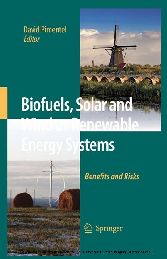Search and Find
Service
Chapter 3
A Review of the Economic Rewards and Risks of Ethanol Production (p. 57-58)
David Swenson
Abstract Ethanol production doubled in a very short period of time in the U.S. due to a combination of natural disasters, political tensions, and much more demand globally from petroleum. Responses to this expansion will span many sectors of society and the economy. As the Midwest gears up to rapidly add new ethanol manufacturing plants, the existing regional economy must accommodate the changes. There are issues for decision makers regarding existing agricultural activities, transportation and storage, regional economic impacts, the likelihood of growth in particular areas and decline in others, and the longer term economic, social, and environmental sustainability. Many of these issues will have to be considered and dealt with in a simultaneous fashion in a relatively short period of time.
This chapter investigates sets of structural, industrial, and regional consequences associated with ethanol plant development in the Midwest, primarily, and in the nation, secondarily. The first section untangles the rhetoric of local and regional economic impact claims about biofuels. The second section describes the economic gains and offsets that may accrue to farmers, livestock feeding, and other agri-businesses as production of ethanol and byproducts increase. The last section discusses the near and longer term growth prospects for rural areas in the Midwest and the nation as they relate to biofuels production.
Keywords Ethanol · economic impact · biofuels · farmer ownership · scale economies · storage · grain supply · rural development · cellulosic ethanol
3.1 Introduction
The economic, social, political, and environmental impacts of modern ethanol production in the U.S. are highly regionalized. Current ethanol production and most new ethanol plant development in the United States are concentrated in the Corn Belt states of Iowa, Illinois, Indiana, Minnesota, and Nebraska. Those states alone produced nearly 62 percent of the nation’s corn in 2006. Not surprisingly, those same states account for about two-thirds of actual or planned ethanol production capacity.
Ethanol production and plant development took on an added urgency in the fall of 2005 after hurricanes Katrina and Rita crippled domestic oil production capacity in the Gulf of Mexico. Those events, coupled with heightened uncertainty about both near-term and long-term oil supplies in light of other international issues, fueled massive amounts of rhetorical, political, and financial resources in support of biofuels production and energy independence.
The growth in U.S. ethanol production has been dramatic: In 2005, 1.6 billion bushels of corn were converted to ethanol, about 12.1 percent of the total corn supply. By the end of 2007 it is estimated that 3.2 billion bushels will be used for that purpose, about a quarter of the nation’s corn supply, and an increase of just over 100 percent in only two years (USDA 2007). That much corn will make enough ethanol to account for 3.9 percent of the nation’s total demand for motor gasoline that year (EIA 2007).
All prices incl. VAT













